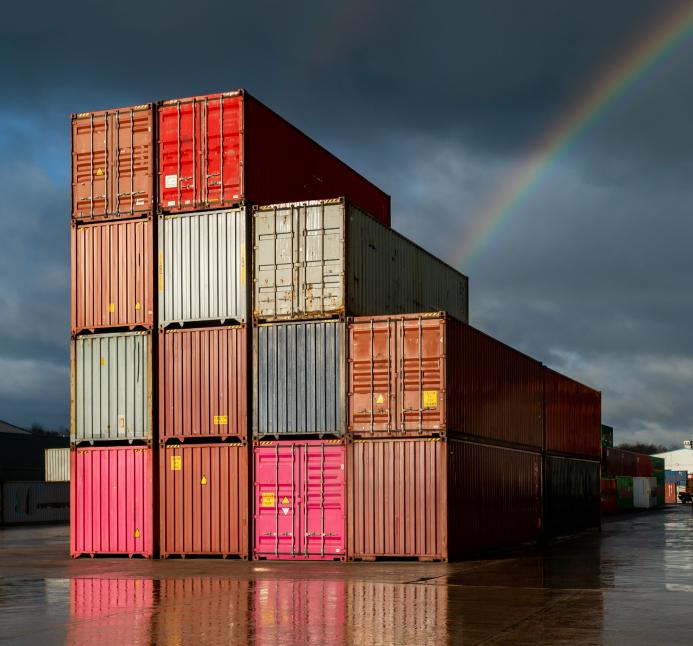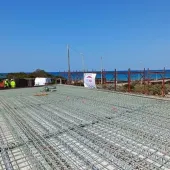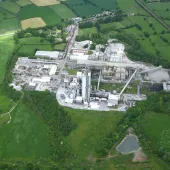Get ready for CBAM: Carbon data guide for UK exporters
Preparing for CBAM: A guide for UK exporters of carbon-intensive goods
The Carbon Border Adjustment Mechanism (CBAM) is the European Union’s landmark policy to prevent carbon leakage and promote global decarbonisation. Designed to align the carbon cost of imported goods with those produced inside the EU, CBAM will have significant implications for UK businesses – particularly those exporting cement, concrete products, steel reinforcement and other carbon-intensive materials into European markets.
The transitional phase of CBAM began in October 2023, requiring importers to submit quarterly reports on the embedded emissions of covered goods. From 2026, full compliance will be enforced – including the purchase of CBAM certificates linked to verified emissions data.
For UK suppliers in the concrete and construction materials supply chain, this marks a major shift: from facility-level reporting to product-level carbon accounting, backed by verifiable data. Accurate and consistent carbon data – both from your own operations and your suppliers – will be essential to meeting these requirements and avoiding trade disruption.
Here’s a practical guide from Dr Alejandra Zazueta Lopez, biodiversity scientist at Tunley Environmental, to help your organisation understand, collect and verify the carbon data required for CBAM compliance.
Step 1: Understand Your CBAM Obligations
Start by confirming whether your business is affected and which products fall under CBAM scope. Reports must be submitted via the EU’s CBAM Transitional Registry and include:
- Total embedded emissions (direct and indirect) per tonne
- Details of non-EU production sites
- Methodologies used to calculate emissions
- Verification status (optional now, mandatory by 2026)
Step 2: Map Your Supply Chain
CBAM focuses on how and where goods are produced, not just the finished product. Identify:
- All non-EU suppliers and production locations
- Energy-intensive steps in their manufacturing processes
- Supplier contacts and communication lines
This forms the foundation for gathering primary emissions data, which is preferred over generic default values.
Step 3: Collect Primary Emissions Data
Aim to gather actual emissions data from suppliers:
- Direct emissions (on-site fuel combustion)
- Indirect emissions (electricity consumption based on local grid mix)
Set up strong, clear communications with suppliers and guide them to use EU-approved methods (e.g. EU CBAM Implementing Regulation or ISO standards). Encourage them to maintain documentation for future audits.
Step 4: Apply the Correct Methodology
Use recognised standards such as the EU ETS Monitoring and Reporting Regulation. Your calculations must:
- Include all relevant emission sources
- Clearly distinguish direct and indirect emissions
- Follow CBAM's format and methodology templates
Life Cycle Assessment (LCA) or GHG accounting may also be useful for supporting or extending your reporting.
Step 5: Prepare for Verification
Verification is not mandatory until 2026, but it’s wise to audit your data now:
- Save original supplier documentation
- Record all calculations and assumptions
- Organise data clearly for future reviews
This will give you confidence and reduce the risk of last-minute corrections under time pressure.
Step 6: Set Up an Internal Reporting System
You’ll need a process to:
- Collect data quarterly
- Validate and check accuracy
- Track changes and maintain audit logs
Companies already reporting to the GHG Protocol, CDP, or EU ETS can adapt some of their systems, but CBAM’s product-level focus means procurement and technical teams will need to collaborate more closely.
Final thoughts
CBAM represents more than just compliance. It’s a chance to gain visibility into your supply chain, reduce your carbon exposure, and position your company as a sustainability leader in the concrete and construction sector.
By starting now, building strong data practices and working transparently with suppliers, you’ll not only meet CBAM requirements — you’ll also be contributing to global efforts to tackle climate change.
For support with CBAM compliance, Tunley Environmental offers tailored consultancy services, helping organisations collect and verify emissions data and improve supply chain sustainability.








